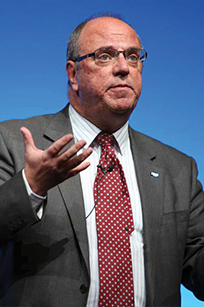Covid-19 update: 9 October
The news emerged over the weekend that nearly 16,000 Covid-19 positive test results had not been included in the daily cases recorded last week. Catching up meant that 12,782 cases were reported on Saturday followed by 22,961 on Sunday. It marks a step change in daily cases with high levels of cases continuing to be reported this week. Thursday’s 17,540 cases were more than two and a half times those reported a fortnight ago.
In a statement to the House of Commons on Monday, health secretary Matt Hancock said the issue was ‘due to a failure in the automated transfer of files from the labs to Public Health England’s (PHE) data systems’. The issue was widely reported to involve the use of Excel spreadsheet software, with data being input exceeding the software’s limit.
In a debate in the House of Commons on Monday, Mr Hancock said a decision had already been taken in July to replace the ‘PHE legacy system’ and work on the upgrade was already underway.
By Monday at 9am, half of the 16,000 people had been contacted by the tracing service. While Mr Hancock did not give a figure for how many of their contacts – which estimates put at 48,000 – had been reached, he said that people were called immediately after initial contact.
The Test and Trace service continues to be under extreme pressure and scrutiny. Former NHS chief executive David Nicholson  (pictured) this week called for care home testing to move to NHS laboratories. And Commons Health and Social Care Committee chair Jeremy Hunt agreed that hospital and university labs should also be responsible for NHS staff testing. Meanwhile there were also reports of supply chain problems at Roche, involving a new automated warehouse. This is leading to delays in dispatch of Covid tests and other diagnostics with solutions likely to take two to three weeks.
(pictured) this week called for care home testing to move to NHS laboratories. And Commons Health and Social Care Committee chair Jeremy Hunt agreed that hospital and university labs should also be responsible for NHS staff testing. Meanwhile there were also reports of supply chain problems at Roche, involving a new automated warehouse. This is leading to delays in dispatch of Covid tests and other diagnostics with solutions likely to take two to three weeks.
Thursday’s latest statistics on the NHS Test and Trace service continued the pattern of underwhelming performance seen in recent weeks with leakage at every step in the contact tracing process. In the week to 30 September, 51,475 people tested positive for the first time – seven times as many positive cases as at the end of August. Just 34,494 people were transferred to the contact tracing system – mostly reflecting the spreadsheet problem – and of these just 25,531 were reached (74%). Just over four out of five (84%) of these positive testers provided details of one or more close contacts – giving a total of 101,782 contacts. And 69% of these contacts were reached and asked to self-isolate.
Turnaround times for community testing were longer for all in-person testing routes compared to the week before. And fewer in-person test results were received the day after the test was taken – 61% compared to the previous week’s 71%. On the stricter measure, across all routes (including home test kits) just 12% of results were received within 24 hours.
NHS Providers chief executive Chris Hopson said the large increase in people testing positive was worrying. ‘It’s also worrying that NHS Test and Trace performance in key areas such as the proportions of positive cases transferred into the Test and Trace system, of close contacts reached, and of tests turned round within 24 hours, are all getting worse when we need them to get better, quickly.’
Layla McCay, director at the NHS Confederation, said that if the system didn’t improve, the NHS would find it incredibly difficult to cope this winter. ‘The fact that new lockdown measures could be brought in imminently is unfortunately an indication that the current system simply isn’t doing its job,’ she said. ‘While testing capacity increases will be helpful, the big issues right now are the fact that turnaround times for results are increasing, and that the percentage of people reached and asked to self-isolate, taking into account all contacts identified, has fallen once again to 68.6%. The result will be more cases inadvertently spread by people who have not been successfully contacted.’
Testing landmark
Daily testing stayed around the 250,000 mark, with capacity reported as 308,000 on Thursday. The Department of Health and Social Care announced that 500 test centres are now open across the UK, which, Baroness Dido Harding, executive chair of the National Institute for Health Protection, described as ‘an extraordinary achievement’ – adding that nearly 700,000 people had now been contacted by the Test and Trace service and asked to self-isolate.
And in a timely announcement given the comments earlier in the week, on Thursday the Department unveiled new partnership agreements with four London university labs that will increase testing capacity by tens of thousands over the winter.
There was no further news about progress towards the target of 500,000 tests per day by the end of October. However health minister Lord Bethell (pictured) did announce that a deal had been signed with the UK Rapid Test Consortium (UK-RTC) to supply one million antibody tests – the ‘have you had it’ test. These kits, which are designed for home use and do not need to be sent to a lab for analysis, will support nationwide surveillance studies to track the virus’s spread. The tests were produced by British diagnostics companies with the consortium set up at the start of the pandemic.
‘Home testing is a powerful tool in understanding the disease and fighting its spread,’ said Lord Bethell. ‘So we are thrilled by the RTC product, both for Britain and export markets around the world.’
Test results clearly give the earliest indicator of how the virus’s second wave is developing. However, comparisons with the first wave are difficult because of the massive increase in tests being undertaken every day. Admissions are arguably a more robust tracking tool and there are clear signs that numbers are rising here too. In England, there were 524 admissions reported on Tuesday – a nearly 70% increase on the 310 a week earlier.
Two-thirds of these admissions were concentrated in two regions – the North West; and the North East and Yorkshire. On Sunday, the North West accounted for nearly 44% of all admissions across England, with Liverpool believed to be the hardest hit. Health secretary Matt Hancock said that hospitalisations in the North West were ‘doubling approximately every fortnight’ and had risen by 57% in the last week alone.
Scotland’s rule change
The rapidly rising admissions have led to tighter local restrictions being imposed. With more than 1,000 new positive tests results in a single day, Scotland was the first to announce new rules. As of 9 October, all non-takeaway licensed premises in a central belt area including Glasgow and Edinburgh will be required to close. Unlicensed cafes will have to restrict hours to 6am to 6pm. Indoor gym classes and non-professional contact sport are being halted.
An evidence paper published alongside the restrictions said the R rate was now in the range 1.3-1.7 and the doubling time for cases was now an average of nine days. The total number of daily infections is estimated to be closer to 3,000, which represents about 13% of the peak in March/April. However, at the current rate of growth (7% increase per day), the paper said the number of infections would be at the level of the March peak by the end of October. The paper says there is no way of knowing where people are picking up infections in most cases. However, in September the numbers of positive testers who reported hospitality exposure has been consistently over 20%.
Similar arguments are being made in England. A data briefing published by the Cabinet Office and the Department on Thursday said that Public Health England analysis suggests that ‘hospitality counts for 30% of common exposure settings’ – rising to 41% for people under 30. And a US study found that adults with confirmed Covid-19 were approximately twice as likely as control participants to have reported dining at a restaurant in the 14 days before becoming ill.
New measures are expected to be introduced in the worst affected parts of England early next week. A three-tier system for local lockdowns is reportedly being discussed, which would place areas in different categories linked to different restrictions and rules.
There were some calls for measures to be introduced immediately, avoiding people using this weekend as a final hurrah before pubs close. However there was also criticism about the lack of involvement of local leaders in plans hatched in Westminster and calls for no restrictions without further support for affected businesses.
Reports suggested chancellor Rishi Sunak was expected to announce just such a revised package of support on Friday.
NHS recovery
There was also a focus this week on NHS’s ability to cope with a second wave, while continuing to recover services and dealing with winter demand. Mr Hopson (pictured) told the NHS Providers virtual annual conference that the service was now going full pelt to recover service volumes, but also warned that the NHS couldn’t cope with all the pressures on its current budget.
Speaking at the same event, NHS England and NHS Improvement chief operating officer Amanda Pritchard said the service was on track to meet its August and September activity targets, set out in guidance during the summer. But she highlighted concerns about staff exhaustion, long waiting lists and patients’ reluctance to access some services.
Latest performance data published this week showed that there were 1.7 million A&E attendances in September, 80% of the level in the same month last year. Emergency admissions at 480,000 have continued to increase from April’s low of 327,000 but are still just at 90% of last September’s numbers.
However the number of people waiting over a year to start consultant-led elective treatment increased to 111,000 in August, the highest level since September 2008. An update from the Nuffield Trust said the nearly half (46%) of people waiting to start elective treatment who had been waiting over 18 weeks was a slight improvement compared to July. However, it has been four and half years since the 18-week target was met. And the diagnostic waiting time target has not been met for over six and a half years.
And the Nuffield Trust’s chief economist John Appleby said that, despite an ‘ambitious drive to get back to seeing close to the usual number of patients’ the figures appeared to show the NHS recovery hitting a wall, with the need for social distancing and infection control ‘unavoidably slowing the service down’.
‘The number of people coming to A&E had been going back up again, but that has now come to a halt, suggesting rising caution. Meanwhile calls to 111 are on the rise. This is similar to the reactions we saw during the first big outbreak of Covid-19 in March.’
Royal College of Emergency Medicine president Katherine Henderson said the country needed to be clear about the ‘scale of what we face as we go into winter’. ‘We cannot go back to the status quo of crowded departments and long waits,’ she said. ‘However, the data shows that we are gradually returning to this, which will put lives at risk. In quarter 1 of 2020/21 there were 118,451 beds in the NHS in England. On 1 October, 96% of these beds were occupied.’
Within this total, beds occupied by Covid patients had quadrupled over the last month and there were five times as many patients on ventilators.
‘While emergency departments will always be open to those seeking emergency care, if Covid cases continue to rise the NHS may be forced to scale back other routine activity to focus on the fight against it,’ she added
Speaking to the NHS Providers conference this week, health secretary Mr Hancock acknowledged that there were ‘tough months ahead’. ‘My message to you, and to everyone who works in the NHS, is that we can and we will get through this,’ he said. Highlighting staff commitment and increasing staff numbers as major assets, he said support for the frontline would be increased and bureaucracy would be reduced to free up their time available to focus on patients. The move to integrated care systems would also go ahead in all geographies by April, which would further help in the battle against coronavirus.
He may have been trying to put a positive spin on events, but with Covid numbers rising, waiting lists lengthening and winter fast approaching, a return to the relative stability of implementing the NHS long-term plan would be welcome.
Related content
We are excited to bring you a fun packed Eastern Branch Conference in 2025 over three days.
This event is for those that will benefit from an overview of costing in the NHS or those new to costing and will cover why we cost and the processes.